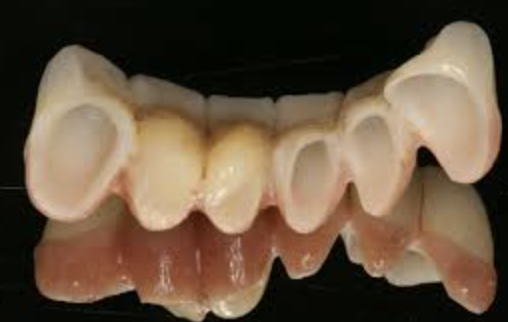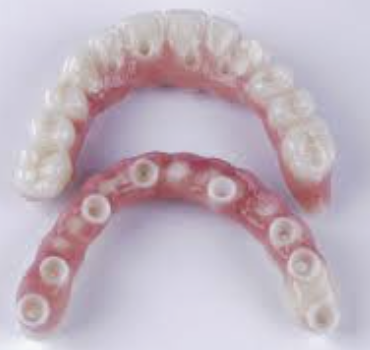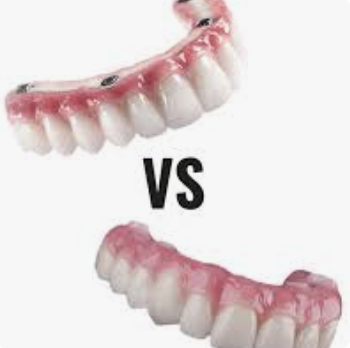Zirconia Crowns. Dental.
What’s a zirconia crown, really?
A zirconia crown is a custom cap that covers a tooth that’s cracked, chewed down, dark, or treated with a root canal. Think of it as armor for your smile. Dentists pick from a few materials (metal, porcelain, resin, ceramic), but when the crown material is zirconia—a super-strong ceramic called zirconium oxide—you get toughness with a clean, natural look. Day to day, folks call it a zirconia dental crown or just “zirconia crowns.”

Why go zirconia?
Teeth wear out from decay, grinding, sports hits, or just living life. A dental crown material zirconia won’t grow your tooth back, but it can:
- Reinforce a weak or cracked tooth so it doesn’t split
- Restore shape after a big filling or fracture
- Cover heavy discoloration that veneers can’t hide
- Protect a tooth after a root canal
- Improve your bite and everyday chewing
- Cap a dental implant (more on zirconia dental implants below)
If you’re in California, Texas, or anywhere else, the decision’s similar: your dentist weighs bite forces, esthetics, and enamel left, then suggests whether the crown material zirconia is the move.
Types of zirconia you’ll hear about
- Full-contour (monolithic) zirconia: one solid block, milled to shape, then stained and glazed. It’s the tank—great for back teeth, grinders, and folks who’ve popped porcelain before.
- Layered/framework zirconia: a strong zirconia core with porcelain layered on top for extra translucency up front. More lifelike for smile-zone teeth, with a small trade-off in chip resistance compared with monolithic.
Dentists also use zirconia dental bridge options (multi-tooth spans). A zirconia dental bridge or broader zirconia dental bridges setup can replace one or more missing teeth when implants aren’t in the cards.
Pros that make zirconia popular
- Strength on strength. Monolithic zirconia shrugs off daily chewing and most grinding better than many porcelain-fused-to-metal setups.
- Gentler on the opposing tooth than some older porcelains that felt like sandpaper.
- Metal-free look. No gray lines at the gum if your tissue is thin.
- Versatile. Works for single crowns, zirconia dental bridges, and abutments on zirconia dental implants if you want a metal-free path.

The trade-offs to know
- Translucency. Classic zirconia can look a touch more opaque than high-end glass ceramics. Newer “high-translucent” blends help, but your dentist may still recommend layered zirconia in the front for the most natural pop.
- Bonding is technique-sensitive. Zirconia usually gets cemented (or bonded with special primers). If the prep is short or there’s limited enamel, your dentist plans the cement strategy carefully to avoid loosening.
- Not a magic wand. If you’re a heavy grinder or love chewing ice, even zirconia can chip or wear over time.
How long do zirconia crowns last?
With good brushing, flossing, and regular cleanings, most crowns last many years—often into the 10-plus range. What shortens the lifespan:
- Night grinding without a night guard
- Chewing ice, pen caps, pistachio shells
- Using teeth as tools (package opening, we see you)
- Skipping hygiene visits or letting gum disease smolder
Zirconia with implants and bridges
- Zirconia dental implants: Some patients choose zirconia implant fixtures or zirconia abutments for a metal-free option. Your surgeon will compare them to titanium based on your bite, bone, and gum profile.
- Zirconia dental bridges: When you’re replacing multiple teeth and implants aren’t ideal, a zirconia dental bridge can bring back chewing strength with a natural finish, especially in the molar zone.
What to expect at the appointment
- Numb and prep the tooth (just a minimal shape tweak in many cases).
- Digital scan or impression → lab mills your zirconia dental crown.
- You’ll leave with a temporary while the final is made.
- Cement day: the crown’s tried in, bite is fine-tuned, then it’s bonded/cemented.
Care tips so it keeps winning
- Brush twice daily, floss the crown margins, and rinse if your dentist recommends it.
- If you clench, wear the night guard—this protects your zirconia crowns and the natural teeth.
- See your hygienist every 6 months so tiny issues don’t turn into big ones.
- This is the same playbook whether you’re in New York, Florida, or the Midwest: if you need serious durability with a clean look, dental crown material zirconia is a legit contender for single crowns and zirconia dental bridges, and it pairs well with certain zirconia dental implants cases when you want a metal-free route.
Zirconia Crowns & Implants
What are zirconia crowns?
If you’re wondering what is a zirconia crown, it’s a custom cap milled from zirconium dioxide (a super-strong ceramic). In plain English: armor for a beat-up tooth that still needs to chew and look good. Because what is zirconia crown made of matters, dentists like that this ceramic is tough, biocompatible, and metal-free. In charts you’ll see it written as a crown zirconia or zirconia dental crown.
Why people pick zirconia
- Looks + strength: newer translucent blocks mimic enamel while staying tougher than many glass ceramics.
- Gentle on bite mates: polished zirconia is smoother on the opposing teeth than some older porcelains.
- Versatile: works for single teeth, zirconia dental bridges, and as abutments over implants; full-contour for grinders, layered for front-tooth glow.
- Tooth preservation: often needs a bit less reduction than some metal-ceramic options.
Porcelain vs zirconia crown (the matchup)
When folks Google zirconia crown vs porcelain, crown zirconia vs porcelain, or tooth crown porcelain vs zirconia, here’s the vibe:
- Esthetics: layered porcelains can be ultra-lifelike; high-translucent zirconia is closing the gap fast.
- Durability: monolithic zirconia is the tank; porcelain-fused-to-metal is strong too but can chip at the porcelain layer.
- Edge line: metal ceramics may show a gray line at the gum; zirconia stays metal-free.
- Adjustability: porcelain is easier to polish/adjust chairside; zirconia needs proper tools and finish.
Bottom line for zirconia crown vs porcelain crown: front-tooth showpieces sometimes favor layered esthetics; back-tooth grinders often love monolithic zirconia.
Common “zirconia crowns problems” to know up front
People search zirconia crowns disadvantages because no material is perfect:
- Translucency limits in some blocks; shade-matching can be trickier on one ultra-bright front tooth.
- Bonding/cementing quirks; zirconia prefers specific primers or conventional cements depending on prep—get the protocol wrong and you can see debonding.
- Adjustment & polish: if a rough spot gets left unpolished, it can scuff the opposing tooth; proper finishing solves most zirconia crowns problems.
- Bulk in tight spaces: older designs could feel bulky; modern CAD/CAM and newer materials help slim it down.
Bridges & implants, the metal-free route
- Zirconia dental bridge / zirconia dental bridges: a solid pick when you’re spanning a gap and want strength with a natural finish.
- Zirconia dental implants: some patients choose zirconia fixtures or zirconia abutments for a fully metal-free smile line. If you’re typing zirconia dental implants near me, ask about surgeon experience, CBCT planning, soft-tissue esthetics, and maintenance.
Cost talk without the sales pitch
Searches like zirconia crowns price, zirconia dental crown price, and zirconia dental implants cost all land on the same answer: “it depends.” Factors include state/city, lab quality, whether it’s full-contour vs layered, implant parts, any bone or gum work, sedation, emergency timing, and your insurance/benefits. Fee-for-service cosmetic cases are typically out-of-pocket; medically necessary work (like fixing a cracked tooth after trauma) may see partial coverage depending on the plan.
Lab tech + CAD/CAM: why the fit feels premium
Modern zirconia dental workflows use digital scans, virtual articulators, and precise milling/sintering. Translation: better margins, bite that seats right, and fewer remakes. If you’ve seen zirconia crown before and after or zirconia crowns before and after photos, that crisp gum line and natural light scatter usually come from good prep + good lab + good polish.
When zirconia shines—and when it doesn’t
- Great fit: molars that take a beating, patients with bruxism (plus a night guard), implant crowns in the smile line that need a clean emergence profile, and multi-unit zirconia dental bridges that must survive steak-night.
- Use caution: a single high-show front tooth next to very translucent neighbors may still call for a layered strategy or a different ceramic to nail the hue.
Care, so you don’t buy the same crown twice
Brush, floss the margins, and show up for cleanings. If you clench, wear the guard. Skip chewing ice and opening Amazon boxes with your teeth. Those simple moves stretch the life of any zirconia dental crown and help avoid revisits about “zirconia crowns problems.”
Quick buyer’s checklist (U.S. clinics)
- Ask the office which blocks they use and why (full-contour vs layered).
- Confirm cement/bond protocol for your prep (short teeth often need adhesive strategy).
- For implants, clarify parts warranties and maintenance; “all-zirconia” doesn’t mean “no upkeep.”
- If you’re shopping zirconia dental implants near me, compare total treatment plans, not just a teaser fee.

Here’s a no-nonsense compare of zirconia vs other popular crown materials.
| Crown material | Best use cases | Aesthetics | Strength / chip resistance | Gentle on opposing teeth | Avg. longevity (with care) | Typical U.S. price (per tooth) | Pros | Cons |
|---|---|---|---|---|---|---|---|---|
| Monolithic Zirconia (full-contour) | Molars, grinders/bruxers, implant crowns, multi-unit bridges | Good–Very good (newer translucent blocks look natural) | Excellent (tank-level) | Good if highly polished/glazed | 10–15+ yrs | $1,200–$2,500 | Super strong, metal-free, often minimal reduction; great for porcelain vs zirconia debates in back teeth | Can look a touch opaque up front; technique-sensitive cementation; rough finishing can cause wear |
| Layered Zirconia (zirconia core + porcelain veneer) | Front teeth where beauty matters, smile makeovers | Excellent (lifelike translucency) | Very good (veneer porcelain can chip) | Good | 10–15 yrs | $1,300–$2,800 | Best blend of strength + esthetics; hides dark stumps | More lab time; veneer chipping risk vs monolithic; slightly higher cost |
| Lithium Disilicate (e.g., e.max) | Anterior crowns/veneers, premolars, conservative onlays | Excellent (enamel-like) | Good–Very good | Very good | 10–15 yrs | $1,100–$2,300 | Gorgeous, bonds well to enamel, conservative preps | Not ideal for heavy bruxers on second molars; can fracture under extreme load |
| Porcelain-Fused-to-Metal (PFM) | Long-span bridges, cases needing proven durability | Good (can show gray at gum) | Very good (metal core) | Fair (porcelain can be abrasive if rough) | 10–15 yrs | $1,000–$2,200 | Time-tested, strong frameworks, handles complex bites | Possible metal line at margin; porcelain chipping; not truly metal-free |
| Full Cast Gold (High-noble/Noble) | Molars (when patient accepts gold color), bruxers | Fair (it’s gold) | Excellent (forgives thin spots) | Excellent (kind to enamel) | 15–20+ yrs | $1,000–$2,400 (depends on gold market) | Longest track record, superb fit, gentle on opposing teeth | Color; metal cost; not for front-tooth esthetics |
| Hybrid Ceramic / Resin-Nano Ceramic | Same-day CAD/CAM, inlays/onlays, temp to mid-term crowns | Good | Fair–Good | Very good | 5–10 yrs | $700–$1,400 | One-visit convenience, easy to adjust/polish, shock-absorbing | Shorter lifespan; can stain/wear faster; not ideal for heavy loaders |
In the U.S., the zirconia crowns price typically lands around $1,200–$2,500 per tooth, with big-city coastal markets running higher (e.g., NYC/SF/LA: $1,600–$3,000) and many Midwest/Southern metros coming in lower ($900–$1,800). A zirconia dental bridge is priced per unit: expect roughly $1,200–$2,500 per unit, so a 3-unit span often totals $3,600–$7,000 before extras (core build-ups, extractions, implants, custom shades). The zirconia dental crown price is usually $100–$400 more than a basic porcelain-fused-to-metal in the same office—though lab tier and esthetic add-ons can make zirconia crowns and high-end porcelains comparable. Insurance may contribute if the case is medically necessary, but cosmetic upgrades are often out-of-pocket. If you’re comparing zirconia crown vs porcelain, ask what’s included (temp crown, night guard, custom staining) to get an apples-to-apples quote.
Zirconia Crowns in the U.S. — FAQ
Straight answers about what are zirconia crowns, costs, durability, and how they stack up against porcelain, bridges, and implants — written for U.S. patients.
What is a zirconia crown and what is zirconia crown made of?
A zirconia crown is a custom cap milled from zirconium dioxide (a strong, biocompatible ceramic). In charts you’ll see it as a zirconia dental crown or crown zirconia—a metal-free option built for strength and clean esthetics.
Zirconia crown vs porcelain crown — which should I pick?
For back teeth and grinders, monolithic zirconia is the tank. For front-tooth esthetics, layered porcelain or high-translucent zirconia can look most lifelike. Most clinics explain porcelain vs zirconia crown by tooth location, bite force, and shade goals.
How much do zirconia crowns cost in the U.S.?
The typical zirconia crowns price runs about $1,200–$2,500 per tooth (big coastal metros trend higher; many Midwest/Southern cities lower). Ask what’s included—temps, custom shade, night guard—when comparing a zirconia dental crown price.
How long do zirconia crowns last?
With good hygiene and a night guard for clenchers, most last 10–15+ years. Polished surfaces are kinder to opposing teeth, and routine cleanings help keep margins healthy.
Any zirconia crowns disadvantages or common problems?
Older blocks could look a bit opaque; shade-matching one front tooth can be tricky. Cementation is technique-sensitive, and rough finishing can scuff the opposing tooth—solved with proper polish and the right cement/primer.
What about a zirconia dental bridge — when and how much?
A zirconia dental bridge replaces missing teeth when implants aren’t planned. It’s priced per unit (about $1,200–$2,500 each), so a 3-unit span often totals $3,600–$7,000 before extras.
Zirconia crown before and after — what should I expect to see?
Most zirconia crown before and after cases show smoother contours, a better bite, and no gray metal edge at the gum. For smile-zone teeth, layered or high-translucent zirconia helps match neighboring enamel.
Can zirconia be used with implants?
Yes—many implant crowns use zirconia for strength and esthetics. If you’re comparing materials or hunting zirconia dental implants near me or zirconia dental implants cost, ask about surgeon experience, abutment design, and maintenance.
Are zirconia crowns good for front teeth, or just molars?
Both. Monolithic zirconia shines on molars and grinders; layered/high-translucent zirconia can look great up front. Your dentist will weigh esthetics, bite force, and space before choosing.
Will insurance help with a zirconia crown or bridge?
Many dental plans cover a portion when it’s medically necessary (fracture, large decay). Cosmetic upgrades and custom shading are often out-of-pocket. Ask for a predetermination with the specific CDT codes.
Do zirconia crowns wear down opposing teeth?
Properly polished zirconia is enamel-friendly. Problems usually stem from rough, unpolished spots or an uneven bite—both fixable at the chair.
Can you whiten a zirconia crown?
No—peroxide gels change natural teeth, not ceramics. If you plan to whiten, do it first; then match the new shade when fabricating the zirconia.
What’s the typical timeline from prep to seat?
Day 1: prep + scan, leave with a temporary. Lab time is usually 1–2 weeks. Seat visit: try-in, bite adjust, polish, then cement. Some offices offer same-day CAD/CAM for select cases.









